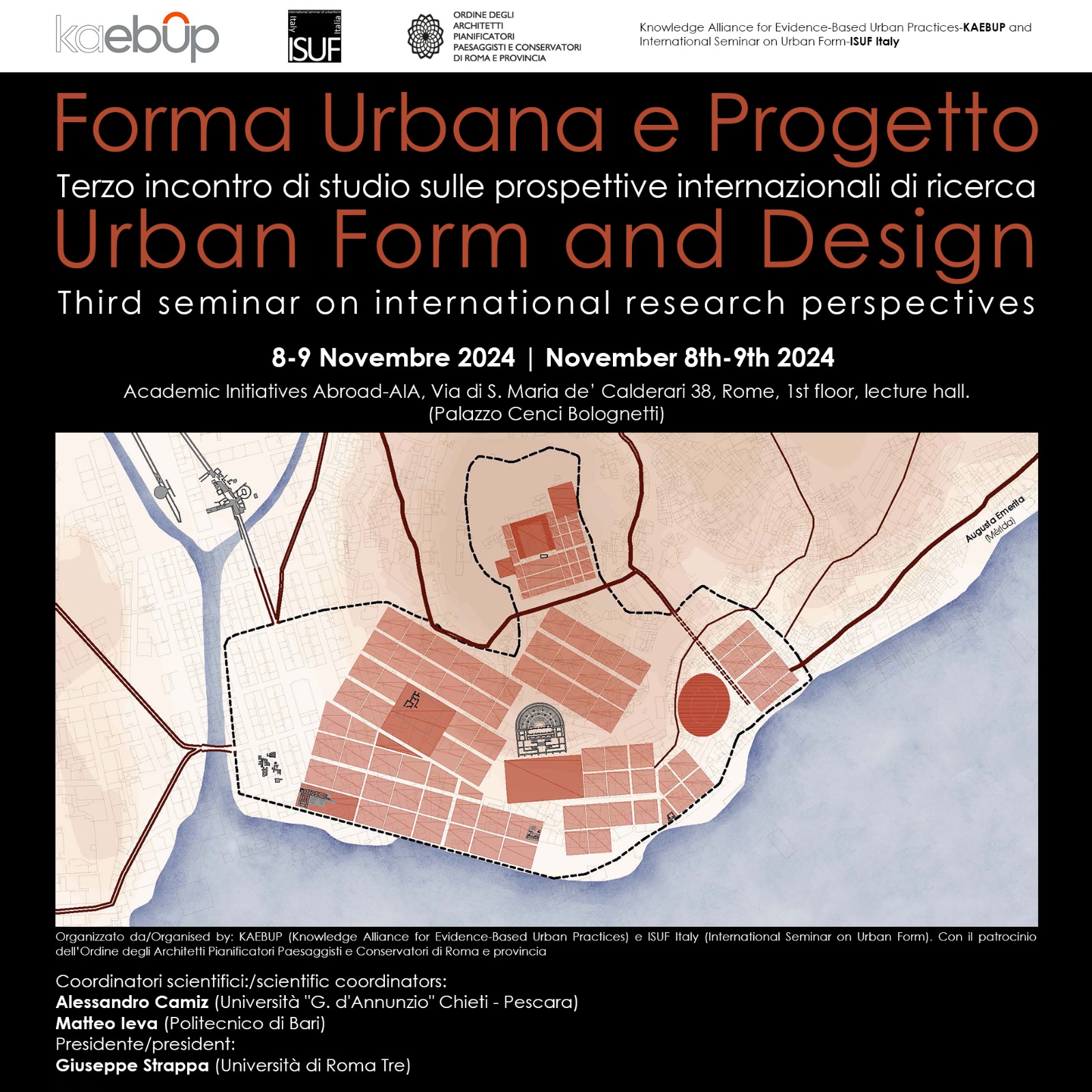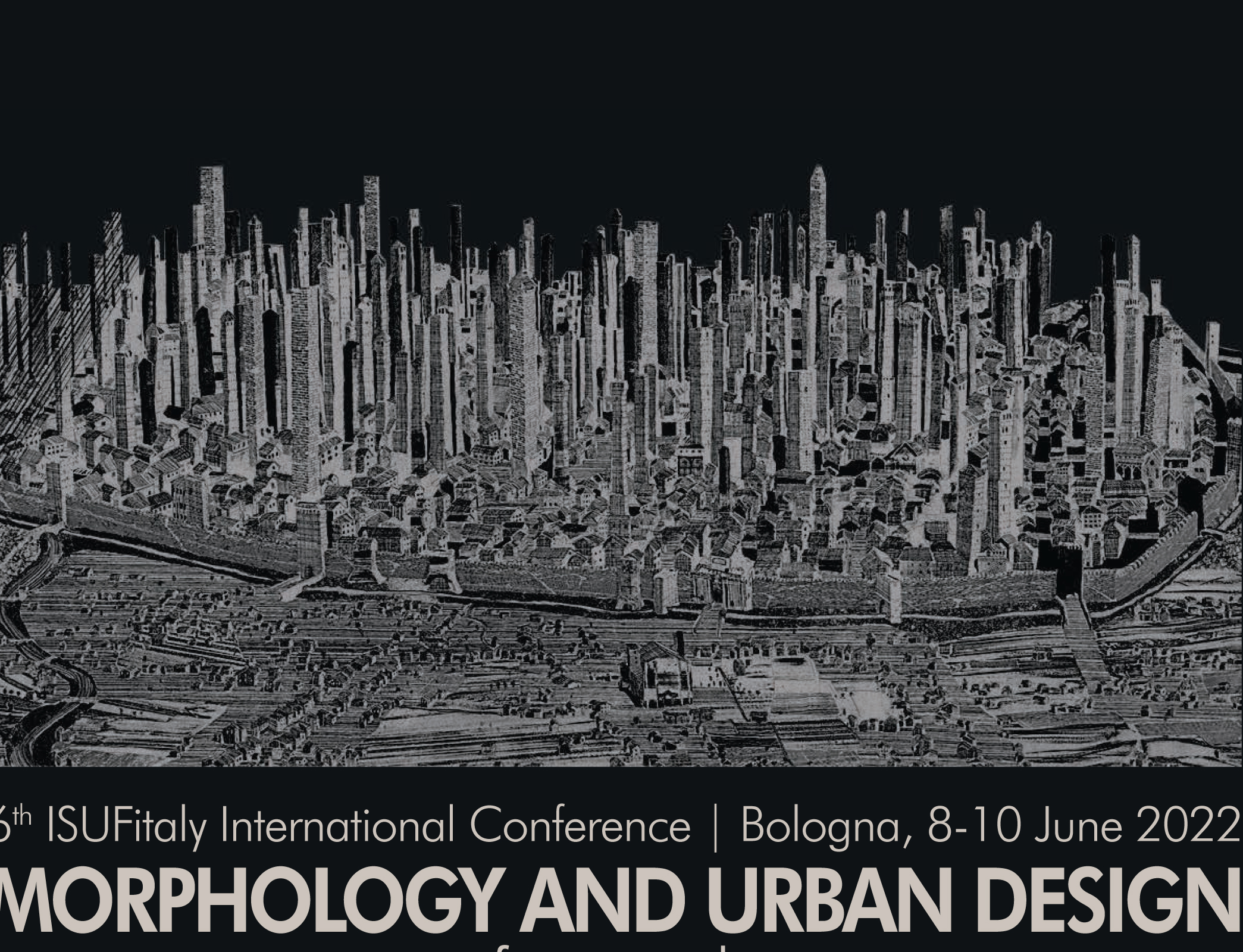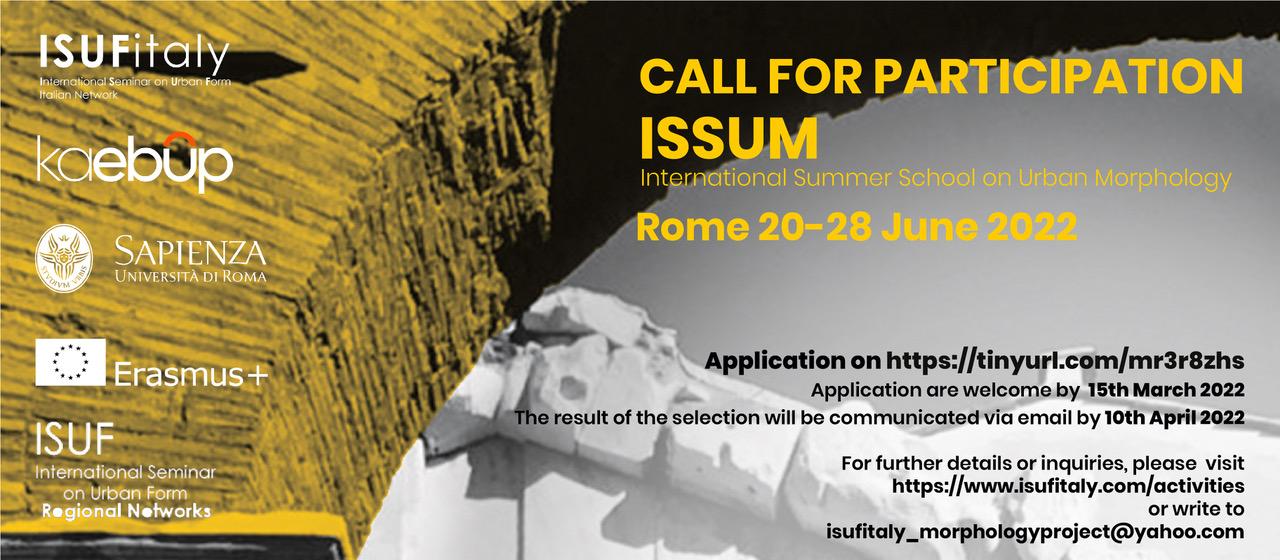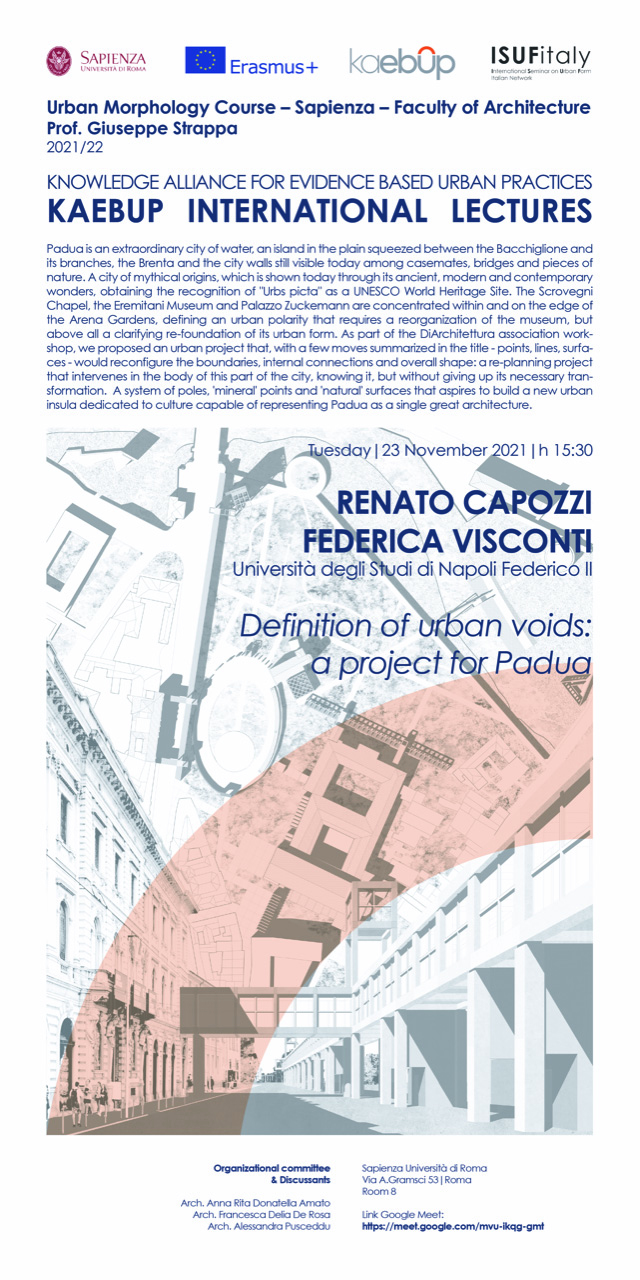XXIX CONFERENCE OF THE INTERNATIONAL SEMINAR ON URBAN FORM 2022
ŁÓDŹ – KRAKÓW | SEPTEMBER 6 – 11, 2022
Urban Redevelopment and Revitalisation
A Multidisciplinary Perspective
The meetings will be held on the 6th of September, 2022, Tuesday, in hall 107N, 88, Narutowicza St., 90-139 Łódź (Faculty of Geographical Sciences, University of Lodz):
16.30-18.00, Central European Summer Time – CEST
We will meet in person, but those who do not come to Lodz will be able to take part in the meeting on Microsoft Teams platform.
Meeting in Microsoft Teams: https://teams.microsoft.com/l/meetup-join/19%3ameeting_OWUyY2VhNjQtYTNjMy00ZDNlLWE0NGEtYmMxY2FiNTFhZTk5%40thread.v2/0?context=%7b%22Tid%22%3a%2263441aef-da0e-4397-bb7e-f9d4705e963b%22%2c%22Oid%22%3a%227c662f37-a208-42ec-b00a-16c436e37fb2%22%7d
It is advisable to download the Teams app in advance (if someone does not have it on their device): https://www.microsoft.com/pl-pl/microsoft-teams/download-app
Isuf Regional Networks 2022 Coordinator Report
Giuseppe Strappa
In the period between the Isuf conference in Glasgow in 2021 and the current one in Lodz and Krakow, the activity of the Isuf Regional Networks was quite intense, despite the well-known difficulties in organizing works involving meetings of scholars. The problems due to the pandemic have had a great influence on the work of the IRNs. But if online meetings cannot replace face-to-face gathering, however, the increase in the use of changed means of communication has also had positive aspects, enormously increasing the opportunities for exchange between the different research groups.
It should be noted that seven conferences were organized by the different networks during the period.
Taken together, even for the wide range of topics addressed, they represent a significant contribution to the dissemination of studies on Urban Morphology.
I would like to summarize their titles:
– The Chinese Network organized the online conference Application prospect of urban Morphology in
China;
– Cyprus Network organized the 2ndCyNUM regional conference: Transformation and Conservation of
Urban Form in South-Eastern Mediterranean Cities;
– ISUFpolska organized the III seminar ICSUS Urban Spaces. Research on the Urban Form in Poland
– Hispanic Network organized online the fifth congress of the Hispanic International Seminar on Urban
Form(ISUF-H), at the Universidad de Costa Rica on December 1-3 2021;
– ISUFitaly organized, online and face to face, the 6th ISUFitaly International Conference
held in Bologna, 8-10 June 2022, with the title: Morphology and Urban design, new
strategies for a changing society;
– Portuguese-language Network will meet face-to-face in November, for the 10th conference of the
network, in Rio de Janeiro, Brazil. Title: Challenges for the urban forms of the twentieth century;
– Turkish Network collaborated in 2021 to organize online (with the Middle East Technical University) the
III. Symposium of Urban Morphology on the theme of Urban morphologies: multi-dimensional
perspectives to the studies of urban form.
I believe these conferences are significant as they allow an increase in exchanges within the different
cultural areas, which have their own specificity and characters, despite the general globalization of cultures.
I would like to point out also three activities that demonstrate the vitality of local associations.
The first is the attempt, generously supported by Wendy McClure, to form the North American Urban
Morphology Network. It held an initial meeting at the ISUF 2020 virtual conference to solicit interest,
followed by a meeting at ISUF 2021’s, also virtual. I believe that the formation of a USA / Canada working
group will give new impetus to our association.
The second is the organization of a research on the relationship between UM and professional practice
within the European Kaebup project (Knowledge Alliance for Evidence-Based Urban Practices), directed by
Nadia Charalabous, in which a number of IRN members participate with local coordination roles. It seems
important to me to contribute in these researches which are a concrete opportunity for exchange of knowledge and methods.
The third is the experiment of a Summer School in UM. We discussed about it in our previous meetings and
the contingencies of Covid did not allow collective participation. However, the attempt we made in Rome has shown how useful this tool can be for exchanges between Regional Networks. On the agenda of the meeting on 6 September in Lodz there will also be the discussion of proposals for the continuation of this
experiment.
The reports presented by the various Regional Networks are reported below:
Chinese Network of Urban Morphology (CNUM)
President: Yinsheng Tian. Email: arystian@scut.edu.cn
Specific interest areas in 2022:
– Morphological characteristics of traditional villages in Southwest China.
– The Relationship between residential houses and urban form in Guangzhou, China.
– The resilience of urban form and the conservation of urban history and culture.
We are preparing a series of books on “Urban Morphology”, two of them have been published in 2022. In
addition, 4 journal papers were published in 2022.
Anonlineconference was organizedon the theme of “Application prospect of urban Morphology in China”.
There were 3 phds and 11 masters in the field of urban morphology graduated.
The wechat official account platform of “Urban Morphology” was founded and 60 issueswere published in
2022. More than 7,600 people follow this official account.
Cyprus Network of Urban Morphology (CyNUM)
Co-presidents:
NevterZaferCömert e-mail:nzafer@gmail.com
Ilaria Geddes e-mail:ilaria.geddes@gmail.com
Email: cyprusnetworkofurbanmorphology@gmail.com
Website:www.cynum.org
Our specific area of interest of interest is the urban form of South-Eastern Mediterranean cities, in particular
port cities. Our methodological expertise is strongest on the configurational and historico-geographical
approaches, and the integration of the two.
Our key activities during the past year include:
– The publication of the ISUF2019 Conference Cities as Assemblages (link:
https://www.tabedizioni.it/shop/product/cities-as-assemblages�331?section=universita&order=ordering+desc), which includes 151 papers, 8 of which are focused on
Cypriot cities.
– The publication of scientific papers and the completion of PhD thesis by our members, including:
o Iranmanesh, A., ZaferCömert, N. and ÖnalHoşkara, Ş. (2021). Reading urban land use through
spatio-temporal and content analysis of geotagged Twitter data. In GeoJournal.
o Allahmoradi, M. and ZaferCömert, N. (2021). A new complementary model of integrating
historico-geographical and configurational approaches: the case of Famagusta. In Urban
Morphology. Based on first author’s PhD thesis.
o Özgece, N, Edgü E. and Ayiran, N. (2020). Assessing the imageability of port cities through the
visibility of public spaces: the cases of Famagusta and Limassol. In Space and Culture. Based on first author’s PhD thesis.
– The 2ndCyNUM regional conference: Transformation and Conservation of Urban Form in South-Eastern
Mediterranean Cities, 7-9 April 2022. A report of which has been submitted separately to the regional networks’ president.
Hispanic International Seminar on Urban Form (ISUF-H)
President: Javier Monclús. Email: jmonclus@unizar.es
Network website: https://isufh.org/
During the last academic course, the Fifth congress of the Hispanic International Seminar on Urban
Form(ISUF-H), took place (online) at the School of Architecture of Civil Engineering, Geography and
Topographic Engineering. Universidad de Costa Rica on December 1-3 2021. The team that coordinated the
event was formed by teachers and researchers from the schools of Architecture, Civil Engineering,
Geography and Topographic Engineering of the university, and the general direction of the congress was in
charge of Dr. Helga von Breymann. Its title was: “Spontaneous cities versus planned cities: different
challenges, different realities”, and had nine thematic lines. . In total, 107 papers were presented by 117
speakers from 17 countries (with a presence of 76% of American countries and 24% of European, mainly
Spain). The proceedings have been published and are available at the ISUF-H website(https://isufh.org/)
together with those from previous congresses in Toledo (ISUF-H 2016), Zaragoza (ISUF-H 2018),
Guadalajara-México (ISUF-H 2019) and Barcelona (ISUF-H 2020). The next congress will take place in
Madrid on September 2022.
An article on Hispanic studies on urban form was published by the president with the title “The Hispanic
International Seminar on Urban Form (ISUF-H). A platform for dialogue between urban planners and urban
form researchers in Spanish-speaking countries. Planning Perspectives, 3. 2022. On the other hand, the
ISUF-H website has been renovated and includes several resources and news, among them the presentation
of the special issue of the journal Ciudad y Territorio Estudios Territoriales (CyTET) coedited by the
president and the secretary of ISUF-H with the title Forma Urbana y Desarrollo Sostenible (Urban Form and
Sustainable Development), available on line.
ISUFItaly – Italian Network of Urban Morphology
President: Giuseppe Strappa e.mail: gstrappa@yahoo.com
Website: https://www.isufitaly.com/
Specificities of Italian working party inside the general Isuf international work are: the close link between
research and design; the notion of process as operating history.
In 2022 Isufitaly carried out some activities concerning these themes. In addition to the usual teaching and
conference organization work, the main activities were:
– 6th ISUFitaly International Conference held in Bologna, 8-10 June 2022 with the title: Morphology and
Urban design, new strategies for a changing society. The topic was the rapid changes that contemporary
societies are facing, radically transforming the perception and the structures of our cities. The parallel
sessions main themes were: communities and governance, new methods and technologies for the urban
analysis , reading the changing urban form, designing a sustainable urban form. Conference Chairs:
Marco Maretto, Nicola Marzot, Annarita Ferrante
– The International Summer School on Urban Morphology (ISSUM) held in Rome 20/28 June organized
by ISUFitaly and Kaebup, international research group having the goal to create a bridge between
research on urban form and design practice. ISSUM has been an experiment intended to provide a centre
of excellence in urban form knowledge through multiple exchange and involvement of students,
academic, professionals, in learning, research and design. We hope that the experiment, which has been
very successful, will be repeated by other local networks. Isufitaly is available to collaborate and provide
its experience. Director: Giuseppe Strappa, Organizing team: Anna Rita Donatella Amato, Alessandra Pusceddu, Nicola Scardigno.
– Two important issues of the U + D journal have been published (15 and 16) intended to review the current situation of UM research in Italy, particularly in relation to urban and architectural design. The
central goal of those issues was also to experiment new forms of collaboration with the authors. We tried to involve designers and scholars interested, in the planning of the issues.
ISUFPolska – Polish Network of Urban Morphology,
President: Anna Agata Kantarek, email: akanta@poczta.onet.pl
ISUFPolska Activities:
1. ISUFPolska – organization of III ICSUS Krakowskie Seminarium o Przestrzeniach Urbanistycznych.
Badania Nad Formą Urbanistyczną w Polsce. Tradycja i Współczesność. (IIIrd Krakow Seminar on Urban
Form. Polish research on urban form. Tradition and Contemporaneity, on-line, 26.11.2021)
2. ISUF 2022 Lodz, Krakow, organization of the XXIX Conference of ISUF
3. Cooperation with Section of Urbanism of Committee of Architecture and Urbanism of Polish Academy of Sciences
4. ISUF POLSKA – a silent partner in CEEPUS Network CROSS/HOUSE: Sustainable Housing –
Cross‐Cultural Society, 2021-2022
https://www.ceepus.info/upload/FileViewer.aspx?ID=A1FA71C6FC8C98E7D86C27D6A682
85E92A3778EADC0769FC90B03E08EA8149B4
5. Teaching (examples): • A. A. Kantarek Urban form and Urban Morphology Seminar for PhD students (in
Polish) Doctoral School, Cracow University of Technology
https://www.pk.edu.pl/images/szkola_doktorska/pliki/sdpkwykaz_przedmiotow_modulowych�architektura_i_urbanistyka-200609.pdf • M. Hanzl Lectures on City Architecture and Morphology – 5th
semester of the BArch (in Polish) course in Institute of Architecture and Town Planning Lodz University of Technology
https://programy.p.lodz.pl/ectslabelweb/przedmiot_4.jsp?l=en&idPrzedmiotu=174919&pkId=1661&s=5&j=
0&w=Architecture& v=4
6. Scientific works (examples):
• M. Hanzl Jewish Culture and Urban Form. A Case Study of Central Poland before the Holocaust,
Routledge, 2022 • A. A. Kantarek, K. Kwiatkowski, W. Korbel, V. Djokić, A. Djordjević, A. Niković and I.
Samuels Mapping post-socialist changes in urban tissues: a comparative study of Belgrade and Krakow,
Urban Morphology Journal, 2022 vol. 26.1 • Musiaka Ł., Nalej M., 2021, Application of GIS Tools in the
Measurement Analysis of Urban Spatial Layouts Using the Square Grid Method. ISPRS Int. J. Geo-Inf.
2021, 10, 558. https://doi.org/10.3390/ijgi10080558 • Musiaka Ł., Sudra P., Spórna T., 2021, Spatial Chaos
as a Result of War Damage and Post-War Transformations. Example of the Small Town of Węgorzewo,
Land 10 (5), 541, https://doi.org/10.3390/land10050541 • Musiaka Ł., Habrel M., Habrel M., Kosmiy M.,
2021, Non-material considerations and uniqueness in the planning of the development of urban space.
Example of Lviv, European Spatial Research and Policy, 8 309-335, DOI: 10.18778/1231-1952.28.1.16 •
Musiaka Ł., Figlus T., Szmytkie R., 2021, Models of morphological transformations of centres of the largest
Polish cities after World War II, European Planning Studies, 29:3, 511-535,
DOI:10.1080/09654313.2020.1744529
North American Urban Morphology Network (NAUMN)
(Network being formed)
The North American Urban Morphology Network held an initial meeting at the ISUF 2020 virtual
conference to solicit interest. At a follow up meeting at ISUF 2021’s virtual conference, participants
enthusiastically agreed about the importance of setting up a network to include interested scholars and
practitioners in Canada and the United States.
– Goal 1: Develop resource directory
– It was decided that creating a resource directory of North American scholars and practitioners with
interests in urban morphology would be an appropriate first step to strengthen networking
opportunities. Professor Emeritus Wendy McClure and Professor Xiao Hi of the University of Idaho
have developed a draft questionnaire for distribution as a first step toward that goal. They plan to
refine and distribute it during the fall of 2022. An appropriate host site needs to be identified to post
the directory once it is completed.
– Goal 2: Hold an in-person NAUMN meeting (or possibly virtual)
– Some participants expressed in holding an in-person meeting to set up bylaws and strategic plan and
elect leadership. However, we have yet to identify an appropriate host site/university and someone
to take the lead as meeting organizer. Additionally,domestic travel is expensive for most and has
been hampered by closure of the US/Canadian border during much of 2021 and 2022
– Wendy McClure, Professor Emeritus of Architecture University of Idaho (ISUF President 2017-2021)
Portuguese-language Network of Urban Morphology (PNUM)
President: Vítor Oliveira. Email: vitorm@fe.up.pt.
Network website: https://pnum.fe.up.pt/en-gb
Throughout the year of 2022, PNUM is having its second set of online presentations. This year, PNUM
online is devoted to the relation between scientific research and professional practice, bringing together
presentations by researchers (both senior researchers and PhD students) and practitioners (planners and
architects, acting at local authorities and in private companies).All presentations are available at
https://www.youtube.com/channel/UC6_Uoy2KPaXJXnWwix9qpKA.
The Revista de Morfologia Urbana / RMU (https://revistademorfologiaurbana.org/) is now publishing its
volume 10, number 2, in continuous flow. RMU is now edited by Renato Rego, Gislaine Beloto e Karin
Meneguetti (Universidade Estadual de Maringá, Brazil). The new editorial team has recovered an initiative
from RMU early years translating some of the most influential papers published in the journal Urban
Morphology.
In the end of the year, in November 29,the community of Portuguese-language urban morphologists will
meet face-to-face for the 10th conference of the network, in Rio de Janeiro, Brazil.‘Challenges for the urban
forms of the twentieth century’, coordinated by Vera Tângari, has attracted about 250 submissions.More
information on the conference is available at https://pnum2022rj.wixsite.com/.
Serbian Network of Urban Morphology (SNUM)
President: VladanDjokić, email: vdjokic@arh.bg.ac.rs
E mail address of organization:morpholab@arh.bg.ac.rs
Website: https://serbian-urban-morphology.tumblr.com
In previous year, activities of Serbian Network of Urban Morphology (SNUM) can be elaborated on three
levels:
(1) Research: Publishing research on (a) Mapping post-socialist changes in urban tissues: a comparative
study of Belgrade and Krakow in URBAN MORPHOLOGY vol 26 (authors: Kantarek A., Kwiatkowski K.,
Korbel W., Djokic V., Djordjevic A., Nikovic A., Samuels I.), (b) reports on Urban patterns, Morphogenesis
study and Space syntax within the book STATEMENTS: Teaching through Design for Sustainability of the
Built Environment and Heritage Awareness as a part of HERSUS project(editors: Djokić et all.) and (c)
Urban morphology: practicum at University of Belgrade-Faculty of Architecture, Presenting research at
ISUF 2021 conference on (a) Heritage Awareness and Sustainability of Built Environment in Architectural
and Urban Design Education: Between best practices and real conditions and (b) Urban Morphology and
Urban Design Competitions in Serbia: Between Substantial and Procedural Aspects.
(2) Professional engagement and networking: Taking part in Scientific Committees at international
conferences (a) Urban Redevelopment and Revitalisation. A Multidisciplinary Perspective- ISUF 2022,
Lodz-Krakow, and (b) Pandemics and Urban Form- PUF2022, INTBAU
(3) Design and development: Accepted proposal for the organization of ISUF 2023 Annual Conference, and
SNUM continued preparation and organization of activities.
Turkish Network of Urban Morphology (TNUM)
President: Ayşe Sema Kubat (Professor PhD),
E mail: kubat@itu.edu.tr, asemakubat@gmail.com
Network website: “isufturkey.org”
Social Media Accounts: Instagram: tnum_tr, Twitter: tnum_tr,
Key activities throughout the year of 2022;
1) TNUM had a set of online presentations. This year, under the name of MorphoTalks-TNUM
online presentations, are devoted to the relation between scientific research and professional practice,
bringing together presentations by researchers (both senior researchers and PhD students) and practitioners
(planners and architects, acting at local authorities and in private companies). V. Oliverio “Different
Perspectives on the Research-Practice Gap” and M. Akay “Algorithmic design control for plot-based
urbanism: a model proposal in Turkish spatial planning context“ were presented. All presentations are
available on TNUM Youtube Page via the following link: https://www.youtube.com/ channel/
UCORken0Xl5HSCkF4eleqjYQ/ featured
2) Publication of the proceedings (April 2022) of the III. Symposium of Urban Morphology, which was
organized online by Middle East Technical University at 3‒5 May 2021, co-chaired by C. Bilsel and O.
Çalışkan on behalf of the Turkish Network of Urban Morphology (TNUM) With the participation of 135
researchers from different disciplinary backgrounds, 69 papers were presented. The theme of the symposium,
‘Urban morphologies: multi-dimensional perspectives to the studies of urban form,’ suggests a
comprehensive overview of the current state-of-the-art in the Turkish School of Urban Morphology. Keynote
lectures were given by P. Larkham, G. Strappa, A.S. Kubat and T. Ünlü, elaborating the overall theme in
relation to the changing conceptions reflecting on different typological and problematic urban contexts.
https:// kentselmorfolojisempozyumu2021 .wordpress.com/
3) Marmara Urban Forum (MARUF) (www.marmaraurbanforum.org) is a biennial international urban forum
organized with the motto of ‘Cities developing solutions’ by Marmara Municipalities Union (MMU), whose
center is in Istanbul. MARUF was organized for the second time in 2021 as a virtual event. Under the title of
“Re-think, co-act” and supported by UN-Habitat, MARUF hosted more than 500 speakers from 52 countries
and was followed by more than 8000 viewers.
In a special session entitled ‘Cities: resolved ‒ urban morphology for better planning and architectural
practices’, urban morphology as an approach and its offers for the production of space were discussed with
the contributions of academicians and experts working on national and international scales. The study areas
and techniques of urban morphology were scrutinized by the presentations of A. S. Kubat, K. Kropf, and V.
Oliveira,. After each presentation T. Ünlü, and O. Çalışkan, made an evaluation. The session that was
moderated by E. K. Çalışkan, can be downloaded from the following link: mbbkulturyayinlari.com/
raporlar/maruf21-report/
Looking forward to meeting you on 6 September, I send you my best regards
Giuseppe Strappa (Isuf Regional Networks Coordinator



